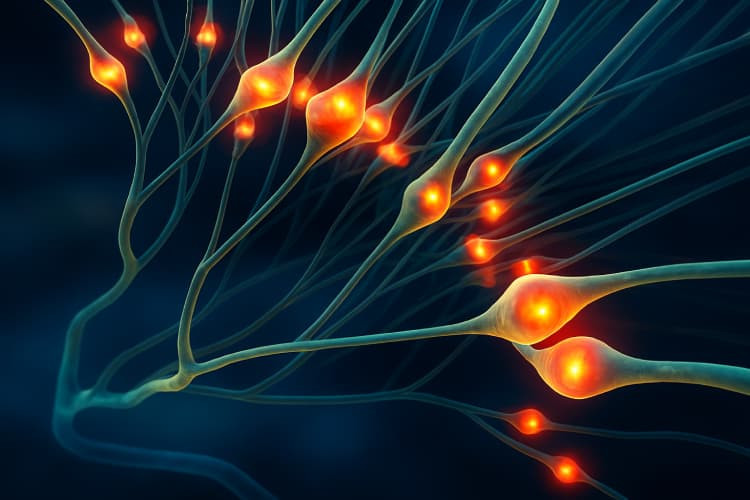Ionologic Gates Connect Neural Systems and Electronics
Technical Analysis | 25-07-2025 | By Liam Critchley

Key Things to Know:
- Iontronic devices use ionic transport to interface with biological systems, enabling bioelectronic applications such as neural prosthetics and brain-machine interfaces.
- Electrochemical capacitors (ECs) offer rapid energy delivery with minimal heat generation, making them suitable for biological integration.
- New EC diodes based on nanostructured h-WO3 exhibit high switching efficiency and stability, supporting advanced ion-based logic operations.
- These ionologic devices enable complex signal modulation through bioinspired mechanisms, such as ion depletion and potential shifting, at low power and voltage levels.
Iontronic devices link conventional electronics with ion-based transport systems, such as biological systems. Iontronic devices control and transport ions, much like how conventional electronics control and transport electrons, allowing the devices to interface with biological systems that are driven by ionic signalling processes.
Ionic transport is slower than electronic systems, but it is crucial in many biological processes and biological logic operations, such as neurons, synapses and ion channels. Neurons act as primary processing units, whereas synapses and ion channels are responsible for modulating and transmitting signals to perform logic-like operations. On the other hand, electronics are much faster and manipulate electrons using conductors to generate signals and process information.
Iontronics form a bridge between these two systems and combines ion transport with electron flow. Iontronics can also maintain the main characteristics of electronic systems, such as a logical response, while also being used as an energy storage through chemical reactions. Iontronics can control ionic currents and, therefore, interact with biological systems while storing energy. This is because iontronics use some of the conventional ions (lithium, sodium, potassium, magnesium) used in biological systems.
Iontronic devices that can bridge ionics and electronics hold a lot of potential in bioelectronics, medical devices, neural prosthetics, brain-machine interfaces and neuromodulation applications. Electrochemical capacitor (EC) diodes are seen as one of the key iontronic components because they possess diode-like rectification and transistor-like switching capabilities and can be used in energy storage and signal processing applications within low-power electronics.
Electrochemical Capacitors for Powering Iontronic Devices
EC diodes, gated ECs and gated-assisted switchable EC diodes are some of the most promising capacitive devices that are analogous to electronic diodes, transistors, and variable-output capacitor diodes. Using ECs in iontronics improves the energy efficiency of the system, and they are ideal for powering iontronic devices because they can rapidly store and deliver energy, which is essential for controlling ionic transport. They can also electrosorb biologically active ions, enabling them to be used at biological interfaces.
Additional benefits of ECs in iontronic systems stem from their ability to support precise ionic selectivity and electrostatic control in confined geometries. This enables localised tuning of ion concentrations, which is especially valuable in synthetic biointerfaces. Integration with soft and stretchable substrates further enhances their biocompatibility, facilitating seamless integration with living tissue without inducing inflammatory responses or mechanical mismatch.
On the other hand, traditional electronics have limitations when they are interfaced with biological systems. One of the main issues is that traditional electronics generate a lot of localised heat, which can damage the surrounding biological tissue. ECs can deliver energy without generating a lot of heat, so they are much more suitable for interfacing with biological systems and typically operate using ion-sieving, intercalation, and battery-like mechanisms.
Moreover, electrochemical capacitors present a lower risk of inducing thermal cytotoxicity, a key factor when interfacing with temperature-sensitive biological components. Unlike conventional transistors, EC-based devices operate under near-physiological voltages and avoid dielectric breakdown in ionic media, making them particularly suitable for implantable or wearable bioelectronic platforms.
New EC Diode for Ionologic Gates
Researchers have developed a new EC diode using nanostructured hexagonal tungsten oxide with biocompatible electrolytes. The devices developed had a high rectification ratio and exhibited efficient logic operations for simple AND and OR logic gates, as well as more complex logic gates. The devices also had a high switching efficiency of 97.5% under a 1 V bias, making them suitable for iontronic applications. The ionologic gate devices also possessed a very high stability and were able to maintain their performance for over 20,000 cycles without degradation.
High-Performance EC Diodes for Ion-Based Logic Operations
The material design of the EC diodes is also pivotal. The use of hexagonal tungsten oxide (h-WO3) nanostructures facilitates fast ion diffusion pathways due to their high surface-to-volume ratio and tunable electronic structure. This enhances both charge storage and redox kinetics, improving the dynamic responsiveness required in logic-driven iontronic systems.
Electrode Configuration and Transistor-Like Operation
The EC diode developed had three electrodes, a working electrode (WE), a counter electrode (CE), and a gate electrode (GE) that controlled the output of the device. The GE allowed the device to function like a transistor, which provided its excellent switching characteristics, and its inclusion also enabled the device to reach a high redox potential. Because the EC diodes use ions instead of electrons, they can mimic the logic operations of neurons, synapses and ionic channels found in the body.
The transistor-like capabilities of the device allowed a current to flow between the WE and the CE that could be switched both on and off using the gate electrode. The switching capabilities of the EC diodes could also regulate electrochemical processes, much like a transistor regulates conventional electronic systems. The gate electrode is responsible for modulating the flow of charge carriers (ions), which allows the device to block and conduct the current.
Ionic Modulation Mechanisms for Signal Control
This modulation capability is possible thanks to two different mechanisms. This first in an ion depletion mechanism that allows the gate electrode to deplete or release ions into the electrolyte solution and control the current flow. This is similar to a conventional transistor that manipulates electron flow using electric fields and allows the device to alter the ion concentrations near the WE and CE to regulate the conductivity of the device.
This ion depletion mechanism mimics the synaptic gating observed in biological neurons, where ion flow is modulated to produce varying signal strengths. Such analogues not only support bioinspired computing models but also pave the way for neuromorphic iontronic circuits that can operate under low-voltage, high-fidelity conditions.
The second mechanism is a potential shift mechanism where the current response is controlled by the GE. The GE shifts the potentials of the WE and CE to switch between an 'open' polarisation state that allows the current to flow and a 'closed' polarisation state that blocks the current. This is possible because the potential region of the WE gets shifted away from the potential region where redox reactions occur.
The gate-controlled polarisation response introduces time-dependent modulation capabilities, enabling more complex signal integration tasks. This is particularly relevant for real-time biofeedback systems where dynamic input from biological markers must be converted into immediate electronic responses within the same system architecture.
To show how the EC diodes could be used in ionic-based logic operations, the researchers integrated them into a number of basic and complex logic gates, ranging from 0 to 2V, with frequencies between 1 and 1000 MHz. The complex logic gates were designed so that the output signals from two gates would be the input for a third gate. The logic gates where the EC diodes were integrated included:
- Basic AND and OR gates
- Three OR gates
- Three AND gates
- Two OR gates and one AND gate
- Two AND gates and one OR gate
The intercalation and deintercalation of hydrogen ions in the nanostructured electrodes are key factors in the device's performance. In the ionologic gates, the devices produced output signals comparable to electronic diodes, even across a range of input frequencies. The logic operations were also found to have a low threshold voltage of 0.4 V and a low power consumption of 2 μW. These factors showed that the EC diodes can provide efficient and stable operations across different frequency environments, opening them up to many potential applications at the interface of electronics and biological systems.
Given their low power demands and high operational stability, EC diodes are poised to become a cornerstone in future bioelectronic systems. Their scalable operation under MHz frequencies and sub-volt thresholds supports their use in implantable neuromodulation circuits, soft robotics, and closed-loop therapeutic platforms requiring continuous real-time signal interpretation and actuation.
Reference:

